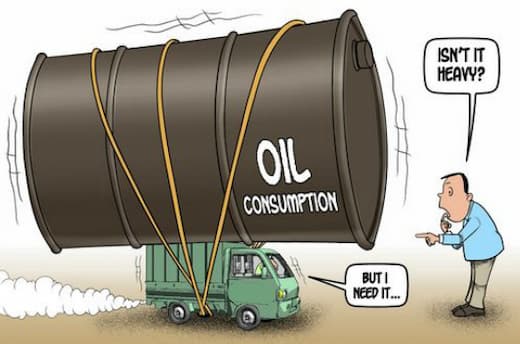
23 July, 2024
The Environmental Benefits of Promotional Metal Mugs
In an era where environmental sustainability is paramount, promotional metal mugs are emerging as an eco-friendly alternative to their plastic and disposable counterparts. Today we'll explore the various environmental benefits of using promotional metal mugs, examining their impact on waste reduction, energy consumption, and overall carbon footprint.
Reduction in Waste
The Problem with Single-Use Plastic Cups
Single-use plastic cups are a major contributor to global plastic waste. The convenience of these disposable items comes at a high environmental cost:
- Short Lifespan: Most plastic cups are used for a brief period, sometimes just minutes, before being discarded.
- Non-Biodegradable Nature: Many plastics do not biodegrade and can persist in the environment for hundreds of years.
- Pollution: Discarded plastic cups contribute to pollution, particularly in marine environments where they can harm wildlife.
- Resource Intensive: The production of single-use plastics consumes natural resources and generates greenhouse gases.
Advantages of Metal Mugs in Waste Reduction
They present an environmentally friendly alternative to single-use cups in several ways:
- Durability: Made from materials like stainless steel or aluminium, they are robust and less likely to break or degrade over time, unlike plastic, paper, or glass alternatives.
- Longevity: Their durability translates into longevity. A single one can replace hundreds, if not thousands, of plastic cups over its lifetime.
- Lifecycle Impact: When evaluating the environmental impact of products, it's essential to consider their entire lifecycle. Although their production requires more resources initially, their extended use significantly reduces their overall ecological footprint.
- Promoting Sustainable Practices: By using and promoting them, companies and individuals encourage a shift away from the disposable culture. This cultural shift is crucial in reducing overall waste production.
- Recyclability: At the end of their lifespan, metal mugs can often be recycled. This end-of-life option is significantly more sustainable than the disposal of single-use cups, which are often not recycled due to contamination or material composition.
Durability and Longevity

The durability and longevity of metal mugs, primarily made from materials like stainless steel or aluminium, play a crucial role in their environmental benefits. Understanding the properties of these materials and their impact on sustainability offers a clearer picture of why metal mugs are an eco-friendlier option compared to other materials.
Material Properties
1. Stainless Steel
Composition: Stainless steel is an alloy composed mainly of iron, with chromium and nickel additions. This composition gives it excellent resistance to rust and corrosion.
Strength: It's known for its strength and ability to withstand high impacts without deforming or breaking.
Temperature Resilience: It can handle a wide range of temperatures, making it ideal for both hot and cold beverages.
2. Aluminium
Lightweight Nature: Aluminium is famed for its lightweight, which makes aluminium mugs easy to handle and transport.
Corrosion Resistance: Although more prone to scratching than stainless steel, it naturally forms an oxide layer that protects it from further corrosion.
Thermal Conductivity: Its excellent thermal conductivity ensures that beverages retain their temperature for longer periods.
Reusability
By opting for reusable metal mugs, there's a significant reduction in the consumption of single-use cups, which are a major source of waste, particularly in urban and corporate environments.
Long-Term Use: They can be used repeatedly for many years without significant wear and tear, drastically reducing the need for frequent replacements of cups or mugs.
Less Frequent Manufacturing: With more consumers and organisations opting for them, the demand for manufacturing disposable cups decreases, leading to a reduction in the associated environmental impact of production processes.
Ease of Cleaning and Maintenance: They are generally easy to clean and maintain, which is crucial for their repeated use. They can often be used in dishwashers, unlike some plastic or disposable options.
Versatility: Suitable for a wide range of beverages, from hot coffee to cold smoothies, they offer versatility that encourages regular use in various settings – home, office, or outdoors.
Energy and Resource Consumption

The production of metal mugs, like any manufactured product, involves the consumption of energy and resources. However, a comprehensive understanding of this process and its comparison with the lifecycle of disposable cups reveals a more nuanced picture of their environmental impact.
Energy and Resource Use in Producing Metal Mugs
Raw Material Extraction: The primary materials require mining and extraction. This process is energy-intensive and has associated environmental impacts.
Manufacturing Process: The transformation of raw materials into metal mugs involves several stages, including melting, casting, and shaping, all of which consume significant amounts of energy.
Transportation: The transportation of raw materials to manufacturing sites and the distribution of finished mugs to markets also contributes to the overall energy consumption and carbon footprint.
Comparing to Disposable Cups
Single-Use Cup Production: The production of disposable cups also involves resource extraction (such as petroleum or trees), manufacturing, and transportation. However, the key difference lies in their short lifespan and single-use nature.
Frequent Manufacturing Cycles: Since disposable cups are designed for one-time use, they require constant manufacturing cycles to meet demand, resulting in continuous resource and energy use over time.
Waste Management: The end-of-life processing of disposable cups, whether they end up in landfills or recycling facilities, also consumes energy and resources, further adding to their environmental impact.
Carbon Footprint
Examining the carbon footprint in comparison with single-use cups involves understanding the greenhouse gas emissions associated with their entire lifecycle, from production to disposal. The carbon footprint is a critical measure of the environmental impact of a product, specifically in terms of its contribution to climate change.
Production Phase
1. Metal Mugs
Energy-Intensive Production: The extraction and processing of metals are energy-intensive processes, often fueled by carbon-emitting sources, contributing to a higher initial carbon footprint.
One-Time Emission: However, these emissions are a one-time cost, given the long lifespan of metal mugs.
2. Disposable Cups
Frequent Production: While the production of a single disposable cup may emit less CO2 than a metal mug, the continuous production of these cups to meet the demands of single-use results in a much higher cumulative carbon footprint.
Resource Extraction: The extraction of raw materials, like petroleum for plastic and trees for paper, also contributes to CO2 emissions.
Transportation
1. Metal Mugs
Less Frequent Shipping: Once produced, the need for transporting them is considerably less frequent due to their durability and reusability.
2. Disposable Cups:
Repeated Transportation: The constant cycle of production and distribution of them means ongoing emissions from transportation.
Use Phase
1. Metal Mugs
No Additional Emissions: During their use phase, they do not contribute additional significant emissions.
2. Disposable Cups
No Emissions in Use: Like metal mugs, they do not emit CO2 during their use. However, the short lifespan means a repeated cycle of production and disposal.
Disposal and End-of-Life
1. Metal Mugs
Recyclability: The end-of-life disposal of them typically involves recycling, which is more energy-efficient than extracting new materials and has a lower carbon footprint.
Reduced Waste: Their recyclability also means less waste in landfills, thereby reducing methane emissions from waste decomposition.
2. Disposable Cups
Landfill Impact: The disposal of them, especially in landfills, contributes to greenhouse gas emissions, particularly methane, a potent greenhouse gas.
Limited Recyclability: Many are not recycled due to contamination or material composition, leading to increased emissions from waste management processes.
Overall Carbon Footprint
1. Metal Mugs
Lower Cumulative Impact: Over their lifespan, the total carbon emissions associated with them are significantly lower than disposable cups when considering the repeated manufacturing and disposal cycle of the latter.
2. Disposable Cups
Higher Lifecycle Emissions: The continuous need for raw materials, production, transportation, and disposal results in a higher overall carbon footprint.
The comparative analysis of the carbon footprint underscores the environmental benefits of choosing reusable over single-use items. While metal mugs have a higher initial carbon footprint, their long lifespan and recyclability mean that their total emissions over time are much lower than the cumulative impact of repeatedly producing and disposing of single-use cups. This assessment highlights the importance of considering the full lifecycle emissions of products and supports the shift towards more sustainable, reusable options in reducing overall greenhouse gas emissions.
Conclusion
They offer a sustainable alternative to disposable cups, with significant benefits in terms of waste reduction, energy and resource consumption, and carbon footprint. Their durability, reusability, and recyclability make them an environmentally friendly choice for organisations looking to promote their brand in a sustainable manner. By opting for them, businesses can contribute positively to environmental conservation and demonstrate a commitment to sustainable practices.
The Mugs Only Team


